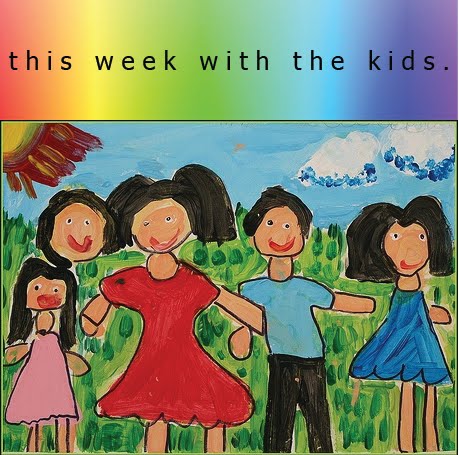Although the wind and temperatures can be cold in August and the day still start with a bitter frosty morning, the beginnings of Spring have arrived! The incredible miracle of new leaf and flower buds are filling stems, stalks and branches.
Right now is the perfect time to start a game with the children that lasts a year.
MY PLANT FRIEND
1. Take your child for a walk to find a planet or tree that has bare branches. Let them pick out their plant friend.
The plant needs to be close by so they can see it regularly.
* In you home garden
* In a kind friendly neighbour's garden
* In a nearly park
* In the parking area at the shops, supermarket, mall, cafe, hall, school..... somewhere you go often.
This plant is to become their year long friend.
2. Each week or if you prefer each month, together with your child take the walk to their plant friend so they can visit and see what is happening.
I have done the weekly and the monthly versions with my children and found both were very rewarding experiences.
3. Once there, the child needs time to just look and chatter away to you if they wish.
Each visit the condition of the plant friend needs to be noted or remembered. The child can do this by making a drawing, taking a photo or collecting a sample.
Drawing demands physical and artistic skills from the child as well as concentration and patience. But this type of drawing is not about creating a work of art, it's about looking and seeing. It needs time and patience from mum to be prepared and have the equipment at hand, then to wait while the child draws.
I found it best to also draw a plant friend, that way I was busy while they were busy.
Photos are good because they are accurate and quick, but that is also their downfall. They prevent the child looking and taking time to get to know their plant friend. That's why I prefer drawing.
Collecting Samples is also good because they begin a physical collection with which the child can compare the future stages of their plant friend.
We found it was best to label each sample at the time with a date tag, or glue it with strong glue onto cardboard with the date labelled underneath, or place it on a large paper page with a date label underneath then covering the sample with clear contact.
However you do it the point is to get them to look, compare and observe for themselves the changes as they occur in their plant friend for the duration of the year.
4. Remember, My Plant Friend is an experience for the child. It is for them to learn and discover what they can using their senses. Mum is allowed to answer questions but not to become a teacher or take over steering the child in how to think about their plant friend. You may find help by reading the final points of the post "Kids Outdoors in the Winter"
5. - At the first visit the child may find only bare branches.
- Next small lumps will appear on the branches and stems. You may be asked what these are. It is fine to give them the name, 'buds', but leave them with the mystery of what a bud is. It is good for them to think and wait.
- The buds grow and form a shape.
- The buds burst open - depending on the plant the bud may hold a leaf or flower. Let them find out.
"life stirs in the beautiful mystery of the leaf-buds, a nest of delicate baby-leaves lying in downy warmth within many waterproof wrappings;...each has its own way of folding and packing its leaflets." HOME EDUCATION : Charlotte Mason p.52.
"Then the flowers come, each shut up tight in the dainty casket we call a bud, as cunningly wrapped as the leaves in their buds, but less carefully guarded." HOME EDUCATION : Charlotte Mason p.53.
- Watch the way the leaves unfold - each plant is unique. It is good to capture the process as you draw, photograph or collect samples.
- Gradually the leaves and flowers multiply and grow in size. They mature, become damaged by the wind, insects or birds. They decay.
- Then there may be fruit. If a child discovers for themselves that the fruit comes out of the flower, they will know it and remember it for life.
- the leaves may change colour and shrivel, then fall off the branch.
THISWEEKWITHTHEKIDS ~ these simple happenings are old stale knowledge to us but it is all new to a child. Our job is to put ourselves into the child's position and to wonder and admire the surprises they discover along with them.
Let your child find a Plant Friend this week.
Cathy










No comments:
Post a Comment